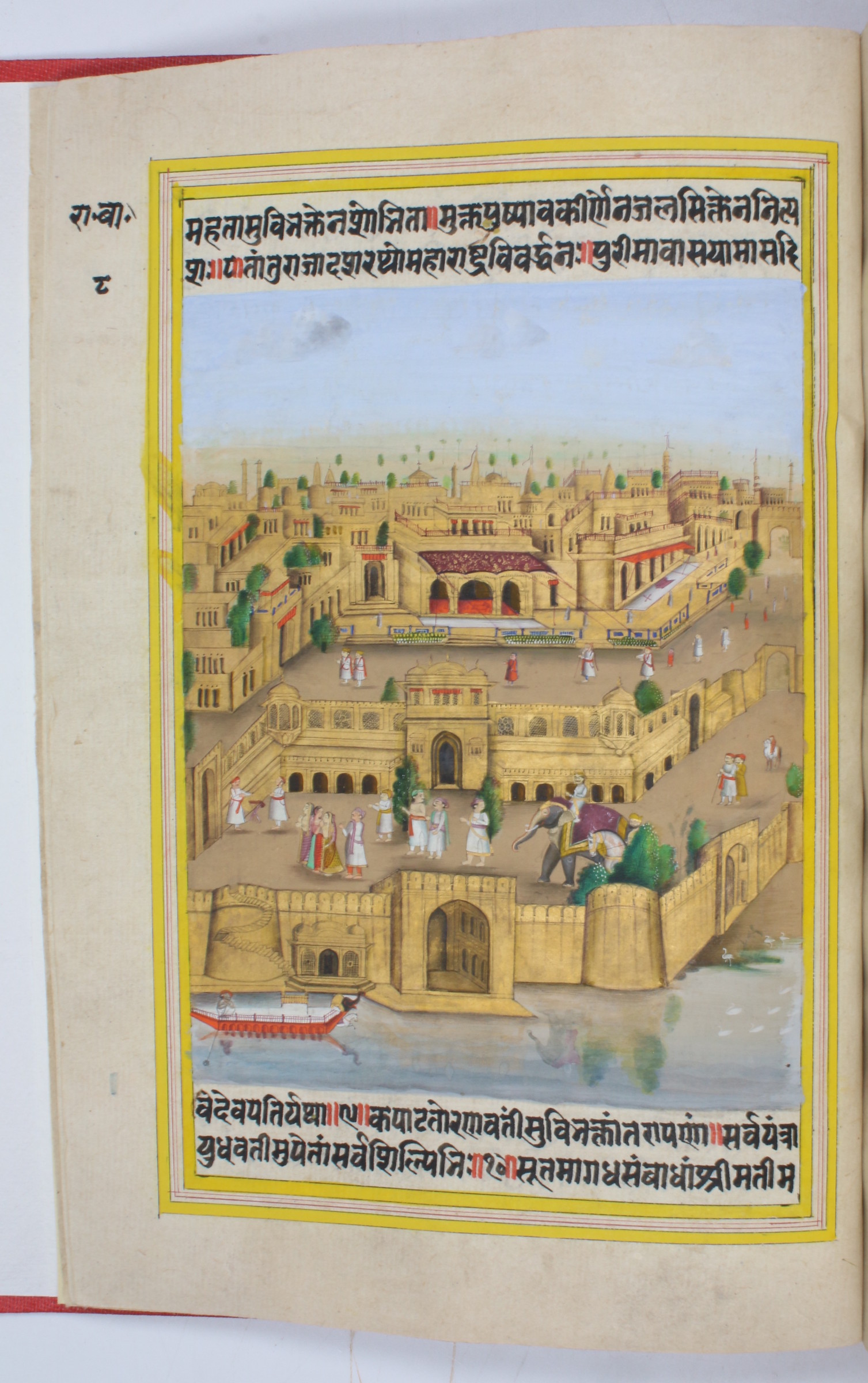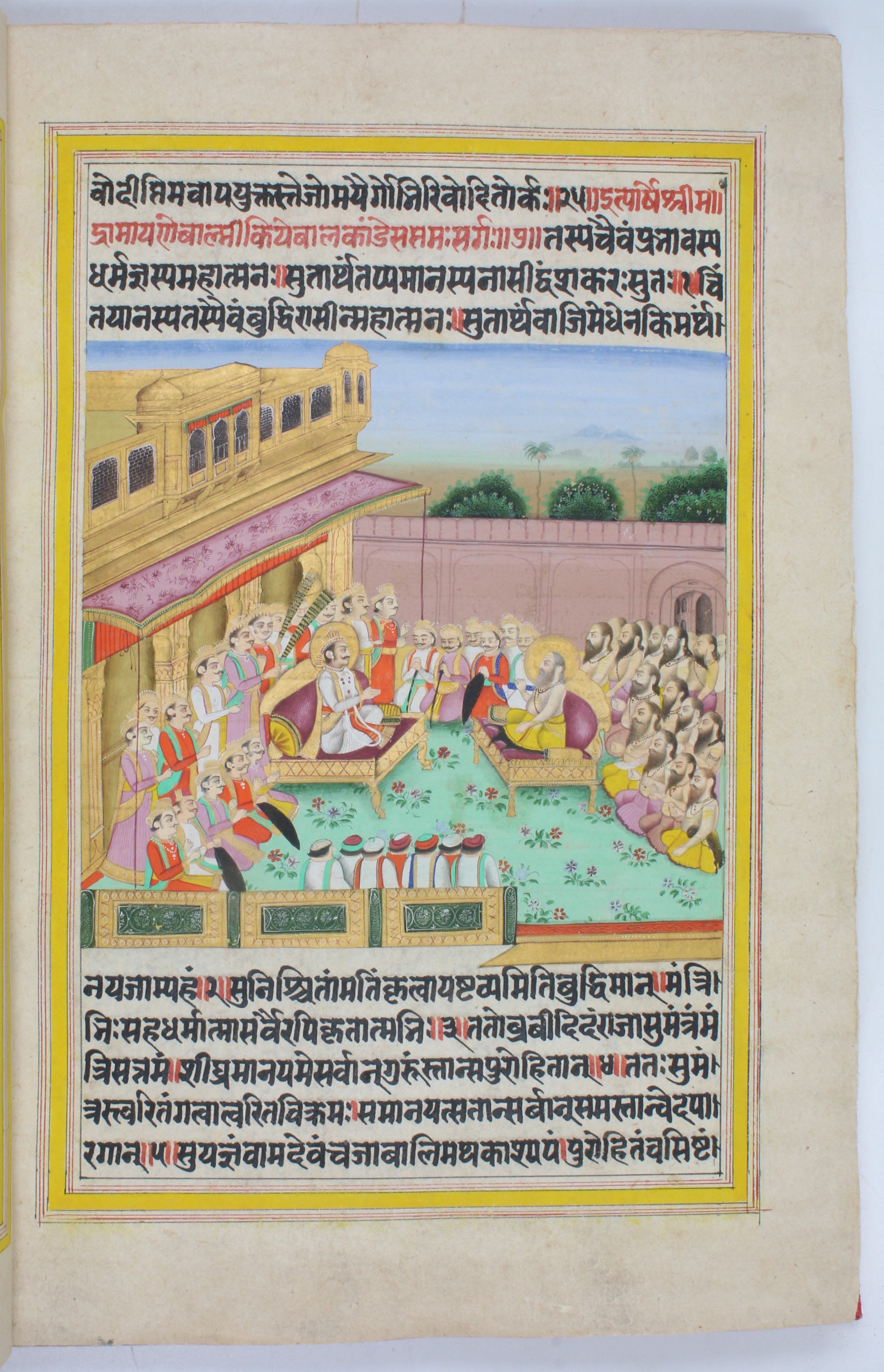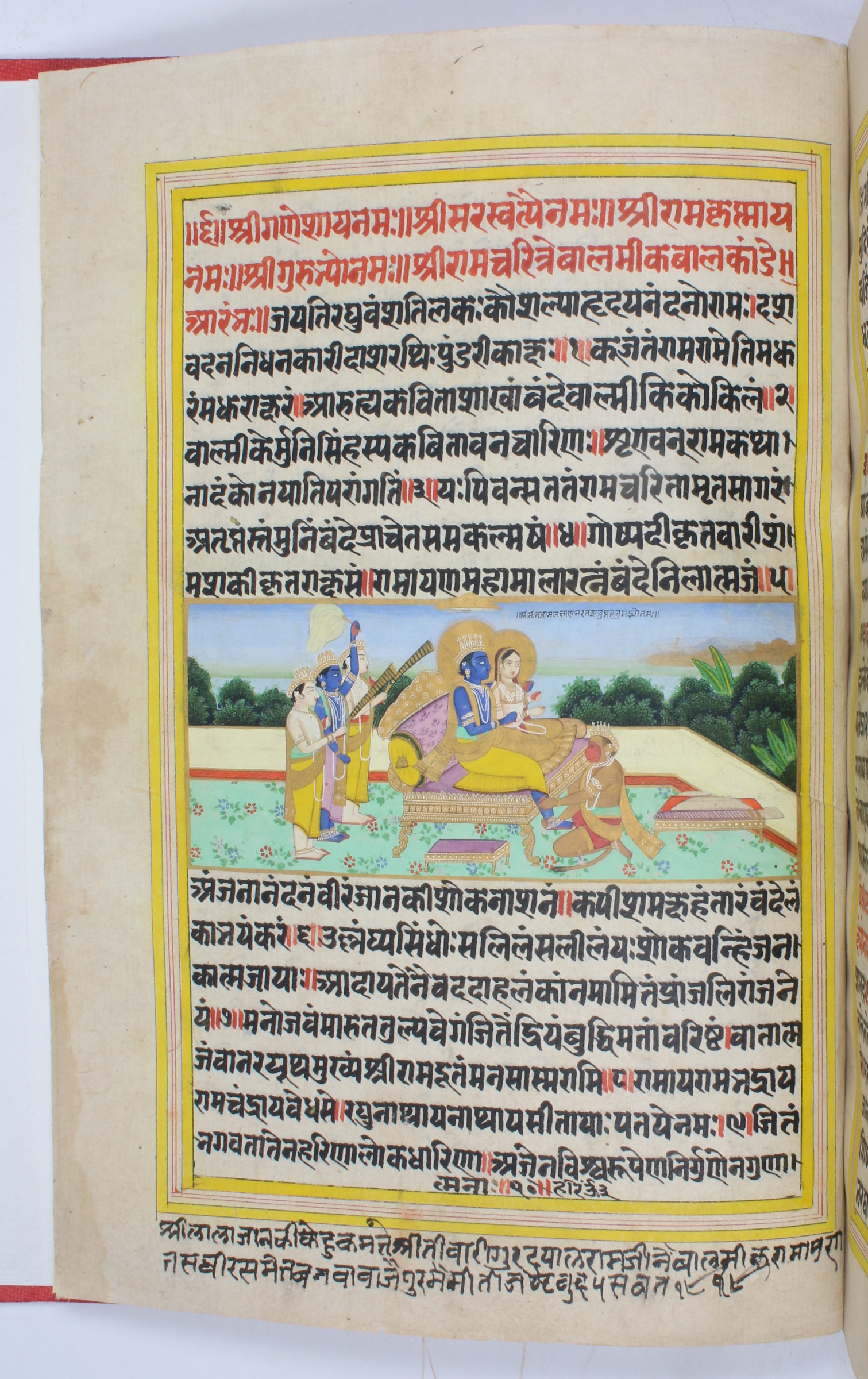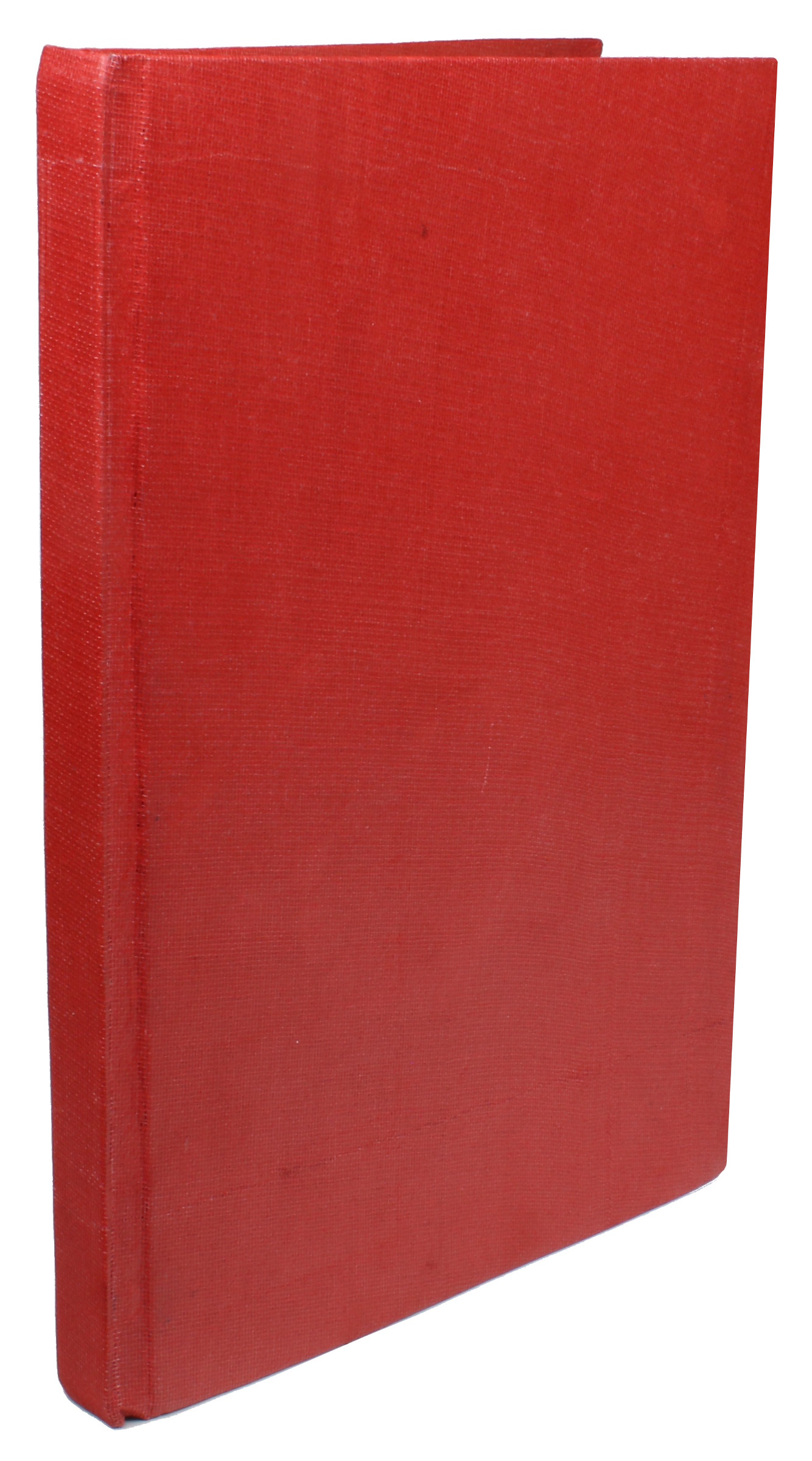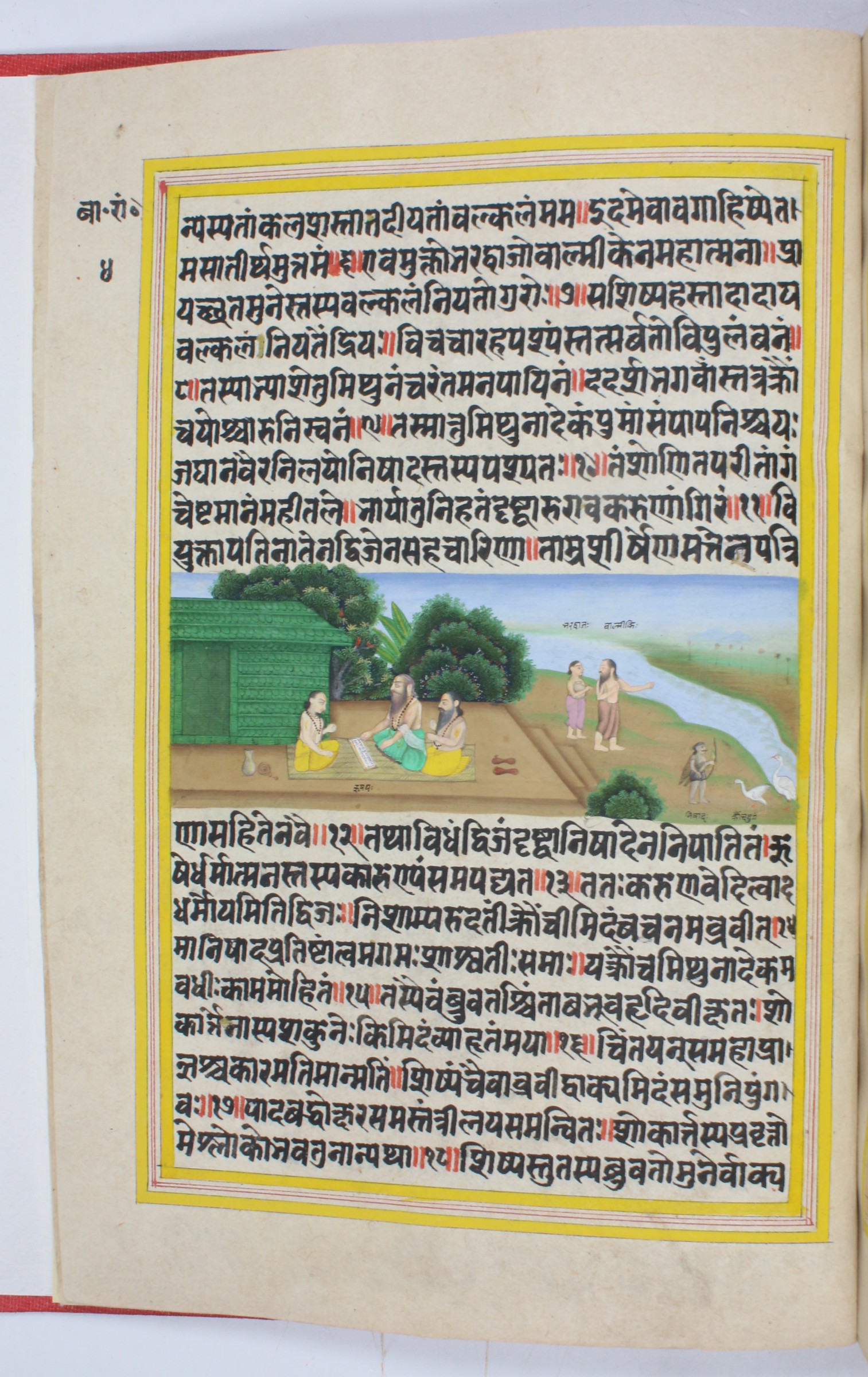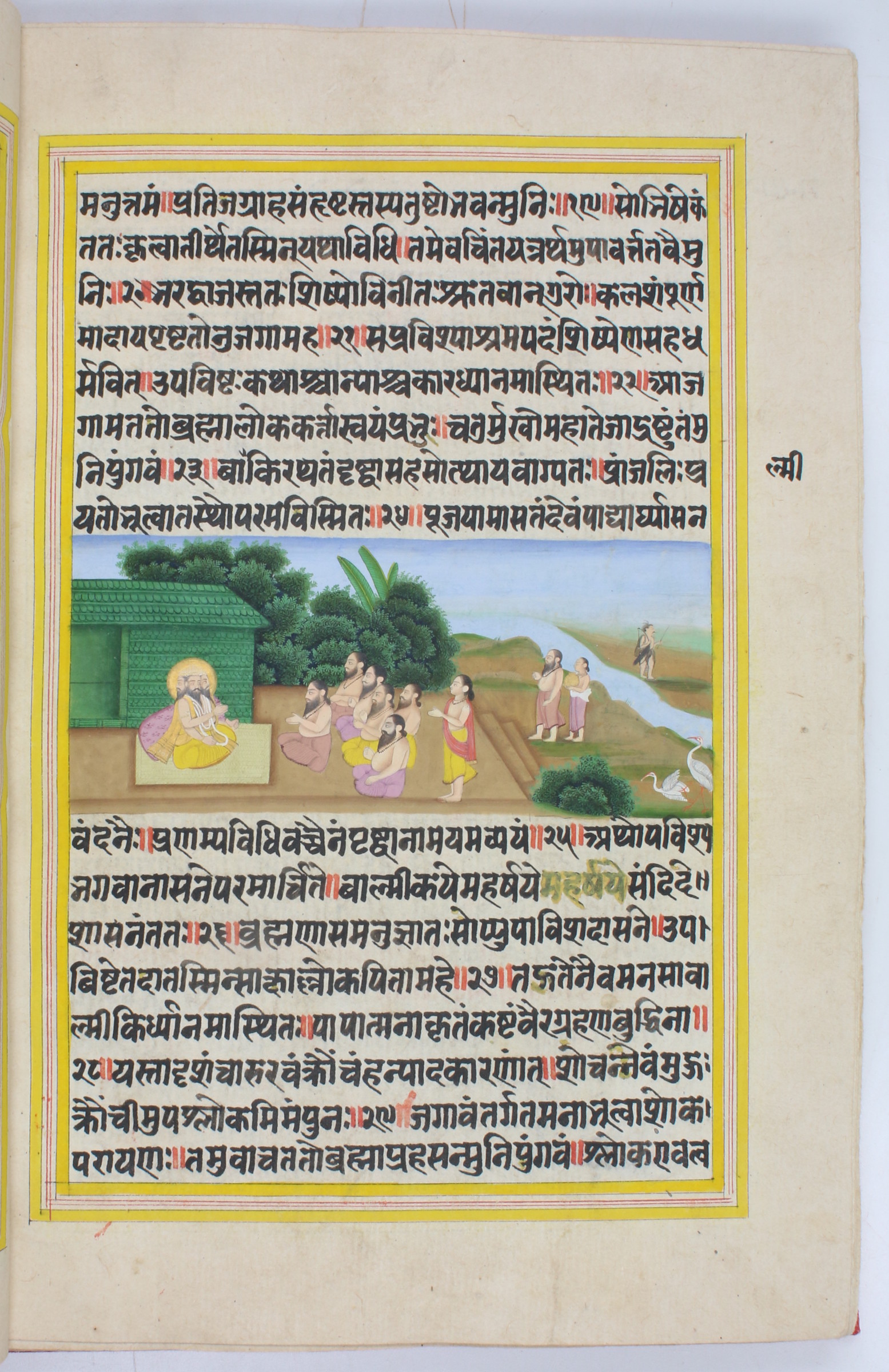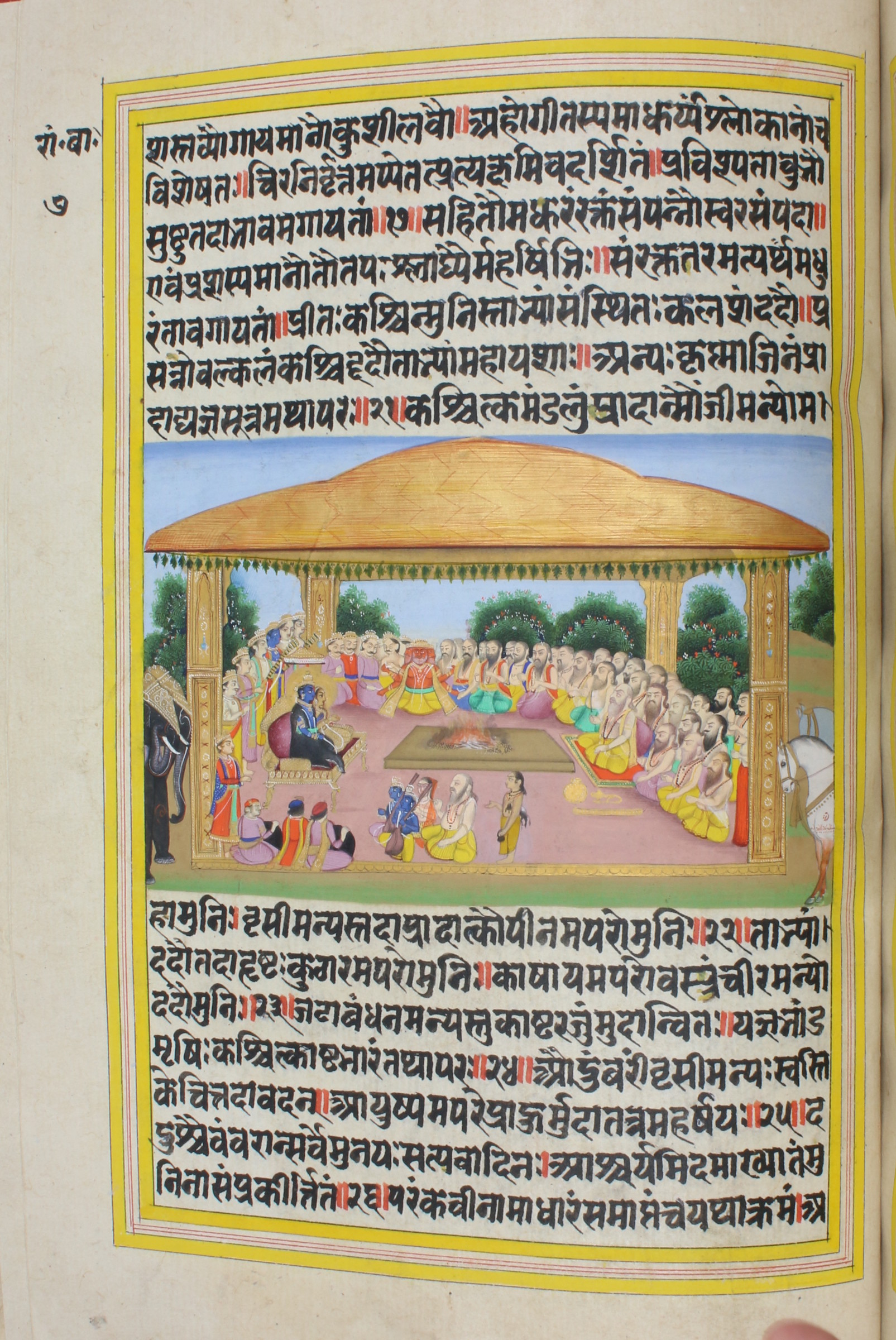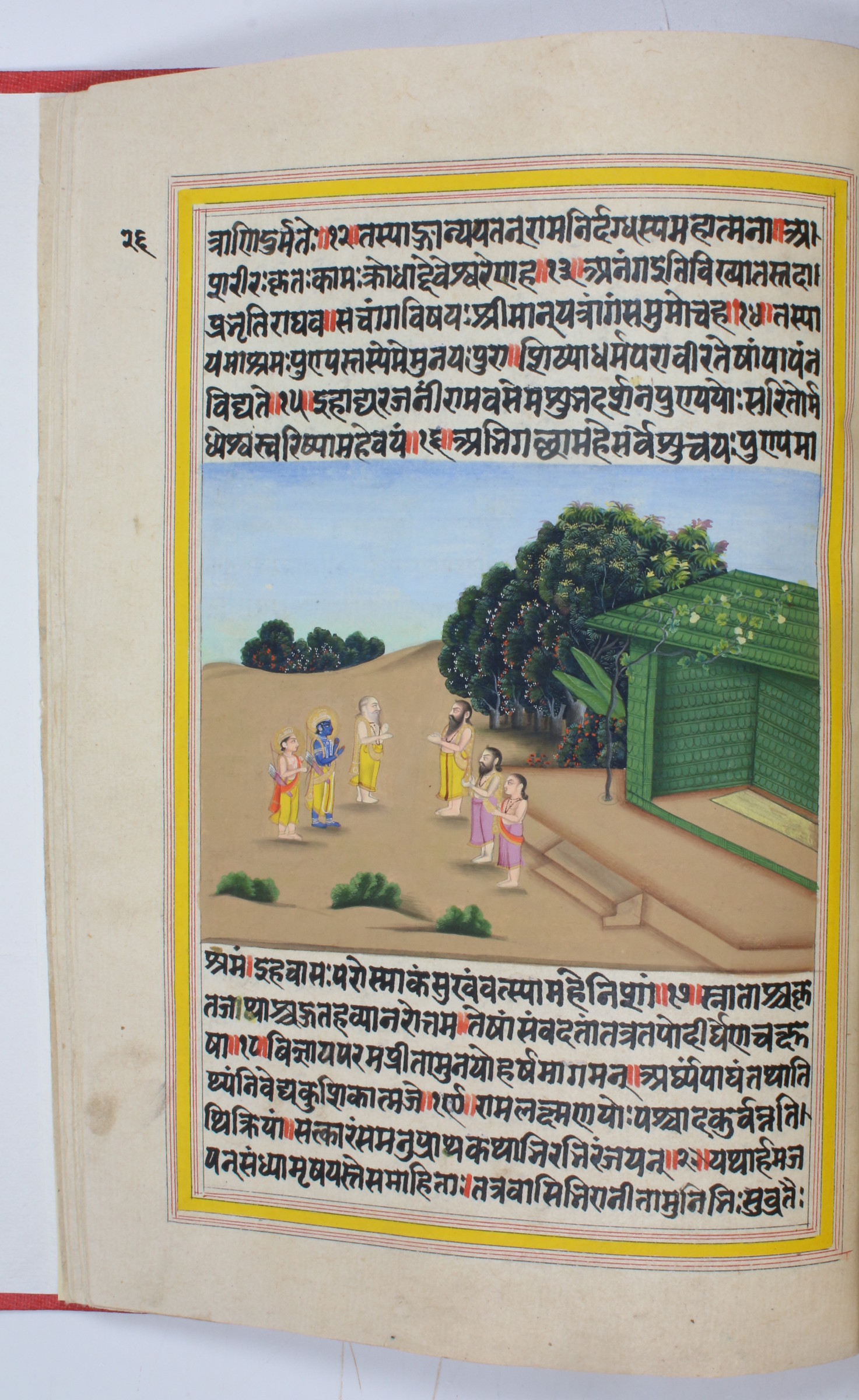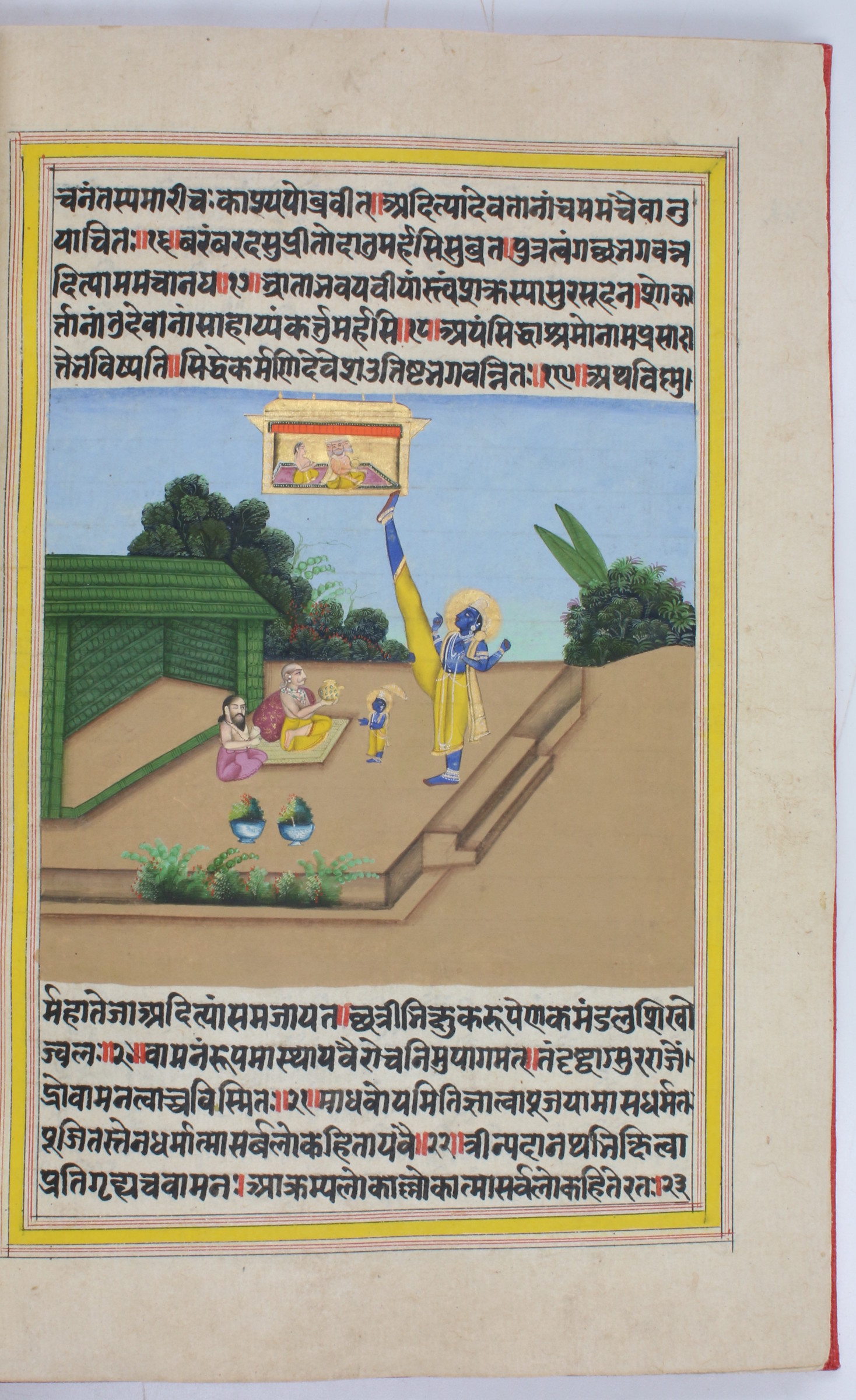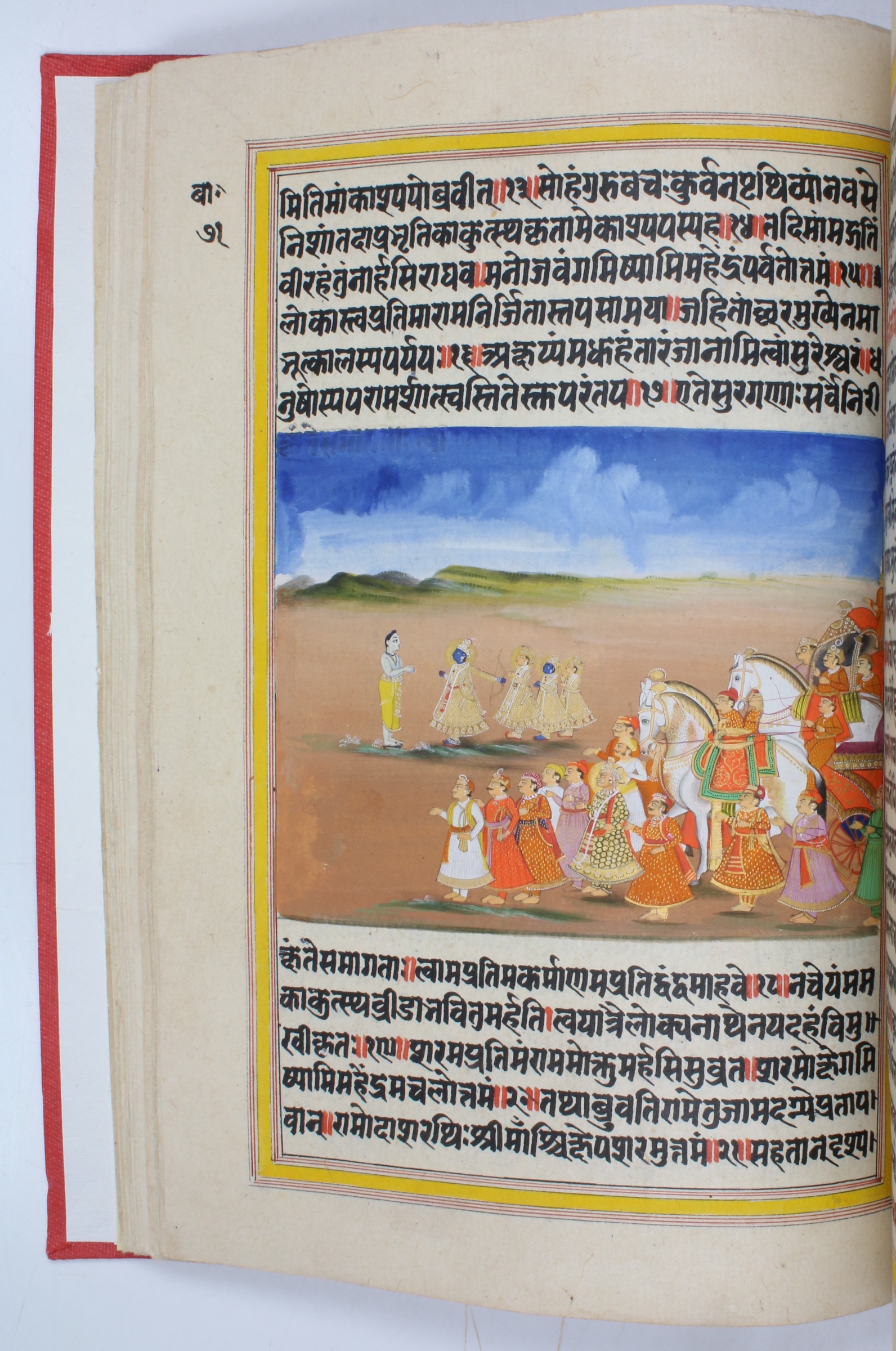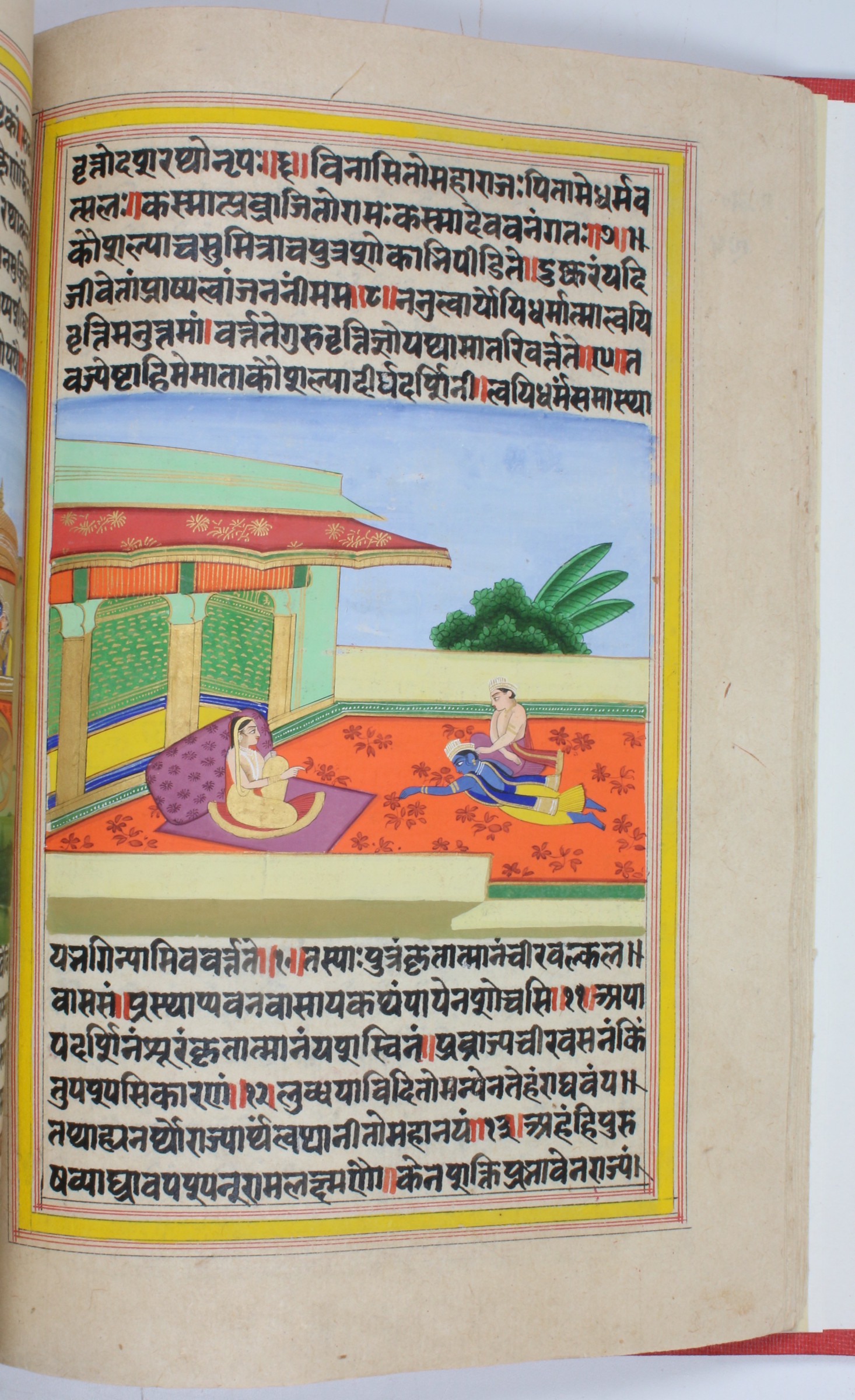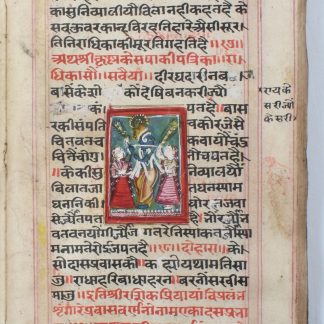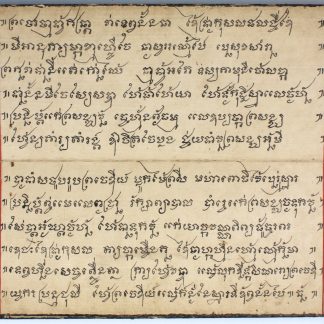A large, lavishly illuminated manuscript
Ramayana.
Folio (230 x 324 mm). Sanskrit manuscript on laid paper. 98 ff. Black and red ink and polychrome pigments heightened with gold. 24 lines of black Devanagari, profusely illustrated by two artists working in the Jaipur style, beginning and end of cantos and chapters indicated in red, text within yellow frame and black and red rules. Comprises the first two books of the Ramayana (Balakanda and Ayodhyakanda), numbered in the upper corner. Bound in modern red cloth.
A central text of Hinduism in a fine, large-format manuscript, lavishly illuminated in the typical "Jaipur" style such as was practised at the court of Jaipur in the 18th and early 19th century.
The Ramayana - "Rama's journey" - is one of India's oldest and most enduring stories. Since it was first told in the Sanskrit epic poem of Valmiki some two and a half thousand years ago, it has been retold over and over in different forms, in many languages of India and beyond. The story embodies the Hindu idea of dharma - duty, behaving correctly according to one's position and role in society.
The Sanskrit text usually consists of seven chapters, though complete manuscript copies almost never appear. The present example comprises the majority of the first two chapters: the Balakanda and the Ayodhyakanda. The number of illustrations make this a very elaborate copy, and it is possible that the commission was for the first two books only and did not include the rest of the epic. The first book covers the frame narrative, relating how the author was divinely inspired to compose the story of Rama and how the hero, having completed wonderful tasks, weds Princess Sita and returns to his native Ayodhya. The second book narrates further adventures of Rama.
The epic of the Ramayana was particularly popular in manuscript form in Rajasthan and the Punjab Hills, and several copies are known dating from the 11th century onwards. The largest known copy, once containing perhaps some 450 illustrations, is known as the "Mewar" Ramayana: commissioned by Jagat Singh of Mewar (ruled 1628-52), it was produced as a complete text in oblong format by a team of painters over a period of five years (the various volumes were dispersed between the UK and India, though most are now in the British Library). By contrast, Ramayana manuscripts of the 18th and 19th century tend to follow the "gutka" format, an "upright" and bound manuscript, as opposed to the earlier, unbound oblong sets. The "gutka" format "was brought to perfection in the late 18th century, above all in the Jaipur royal library", with an aim to equal contemporary Muslim manuscripts (J. P. Losty, The Art of the Book in India [Bradford, 1982], p. 145). Works executed during this period are often characterized by their "flat" style, which derives from the work of the well-known master Sahib Ram, active during the reign of Sawai Pratap Singh (ruled 1778-1803). Few examples have survived complete or near-complete outside India, and generally only isolated paintings are encountered. It is rare to find a large section of the epic with its original illustrations. This manuscript closely compares to a luxurious copy of the Ramayana painted in the Jaipur style by the artist Ramcharan Kayastha and dated to 1796/97 (Christie's, 12 June 2018, lot 76). The two manuscripts share an identical vertical format, and their overall layout are closely related. They are profusely illustrated with paintings directly inserted into the Sanskrit text, framed by simple coloured rules that contrast with the refined illustrations.

